How Does a Power Pole Transformer Work in Rural vs Urban Grids?
Have you ever noticed the differences in power distribution between cities and countryside areas? The way electricity reaches our homes can vary greatly depending on where we live. This difference is largely due to how power pole transformers operate in these diverse environments.
Power pole transformers work similarly in rural and urban grids, stepping down high voltage to usable levels. However, they face different challenges in each setting. Urban transformers deal with higher load densities and space constraints, while rural ones must handle longer distances and more varied terrain.
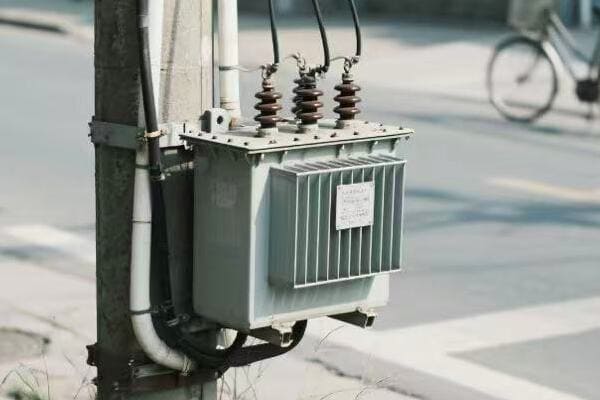
In this article, I’ll explore how power pole transformers function in both rural and urban environments. We’ll look at their basic operation, the unique challenges they face in each setting, and how these differences impact our power supply. Let’s dive into the world of power distribution and see how these crucial devices adapt to their surroundings.
What Is a Power Pole Transformer and What Does It Do?
Have you ever looked up at those cylindrical objects on power poles and wondered what they are? These devices, called power pole transformers, play a crucial role in delivering electricity to our homes and businesses. But what exactly do they do?
A power pole transformer is a device that changes the voltage of electricity in power lines. It steps down high voltage from transmission lines to lower, safer levels for use in homes and businesses. This process is key to efficient power distribution across long distances and safe use in local areas.

Understanding Power Pole Transformers
Let’s break down the key aspects of power pole transformers:
Basic Function
Power pole transformers have one main job: to change voltage levels. They take high-voltage electricity from main power lines and reduce it to a level that’s safe for use in our homes and businesses. This process is called "stepping down" the voltage.
Key Components
- Core: Made of laminated steel sheets
- Windings: Two sets of coiled wires (primary and secondary)
- Insulating Oil: For cooling and insulation
- Tank: Houses all components
- Bushings: Allow electrical connections in and out
How They Work
The transformer uses a principle called electromagnetic induction. Here’s a simple breakdown:
- High voltage electricity enters the primary winding
- This creates a changing magnetic field in the core
- The magnetic field induces a lower voltage in the secondary winding
- The lower voltage electricity exits for distribution
I remember explaining this concept to a group of students once. I used a simple analogy: imagine the transformer as a gear system in a bike. Just as gears can change the speed and force of pedaling, transformers change the "force" (voltage) of electricity.
Importance in Power Distribution
Power pole transformers are crucial for several reasons:
- Efficiency: They allow power to be transmitted at high voltages over long distances, which reduces energy losses.
- Safety: They step down voltage to safe levels for home use.
- Flexibility: They can be adjusted to meet varying local power needs.
Here’s a table showing typical voltage levels in power distribution:
| Stage | Voltage Level |
|---|---|
| Power Plant Generation | 10,000 – 25,000 V |
| Long Distance Transmission | 155,000 – 765,000 V |
| Sub-transmission | 69,000 – 138,000 V |
| Distribution | 4,000 – 34,500 V |
| Home/Business Use | 120/240 V |
In my experience, the role of power pole transformers is often underappreciated. I once worked on a project to upgrade transformers in an older neighborhood. The residents were experiencing frequent power fluctuations. After installing new, more efficient transformers, the power quality improved dramatically. The residents were amazed at the difference, not realizing how crucial these devices are to their daily lives.
Power pole transformers are the unsung heroes of our electrical grid. They work silently, day and night, ensuring that we have safe, reliable power in our homes and businesses. As we continue to rely more heavily on electricity in our daily lives, the importance of these devices only grows. Understanding their function helps us appreciate the complex infrastructure that powers our modern world.
Key Differences Between Rural and Urban Power Distribution Systems?
Have you ever wondered why power outages seem more common in rural areas compared to cities? Or why the power infrastructure looks different in these two settings? The answer lies in the unique characteristics of rural and urban power distribution systems.
Rural and urban power distribution systems differ in load density, distance covered, and infrastructure design. Urban systems handle higher loads in smaller areas, using more transformers. Rural systems cover larger areas with lower population density, requiring fewer but more spread-out transformers.
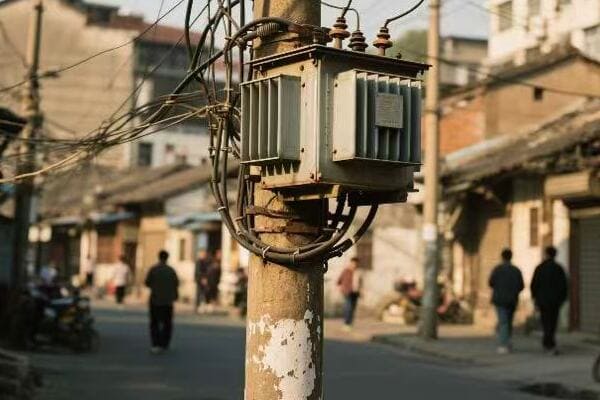
Comparing Rural and Urban Power Distribution
Let’s explore the key differences between rural and urban power distribution systems:
Load Density and Demand
-
Urban Areas:
- Higher population density
- More concentrated power demand
- Greater number of commercial and industrial consumers
-
Rural Areas:
- Lower population density
- Spread out power demand
- Mostly residential and agricultural consumers
In my experience, this difference in load density is one of the biggest challenges in power distribution. I once worked on a project to upgrade the power grid in a rapidly growing suburban area. We had to completely redesign the transformer layout to handle the increasing load density as the area transitioned from rural to urban.
Infrastructure Design
-
Urban Systems:
- More complex grid structure
- Higher number of substations and transformers
- Underground distribution common in some areas
-
Rural Systems:
- Simpler, more linear grid structure
- Fewer substations, transformers cover larger areas
- Mostly overhead distribution lines
Distance and Line Length
-
Urban Systems:
- Shorter distribution lines
- Lower line losses
- Easier maintenance and quicker repair times
-
Rural Systems:
- Longer distribution lines
- Higher line losses
- More challenging maintenance and longer repair times
I remember a particularly challenging project in a remote rural area. We had to design a system that could maintain voltage quality over long distances. It required careful placement of transformers and voltage regulators to ensure stable power delivery to the farthest points.
Reliability and Outages
-
Urban Systems:
- Generally more reliable due to redundancy
- Faster outage response times
- Less exposed to weather-related issues
-
Rural Systems:
- More vulnerable to outages
- Longer response times for repairs
- More exposed to weather and wildlife-related issues
Here’s a comparison table of key aspects:
| Aspect | Urban Distribution | Rural Distribution |
|---|---|---|
| Load Density | High | Low |
| Infrastructure Complexity | High | Low |
| Line Length | Short | Long |
| Number of Transformers | Many | Few |
| Outage Frequency | Lower | Higher |
| Maintenance Ease | Easier | More Challenging |
The differences between rural and urban power distribution systems significantly impact how we design and maintain these networks. In urban areas, the focus is often on managing high loads and ensuring reliability in a compact space. In rural areas, the challenges revolve around covering vast distances efficiently and maintaining service quality in remote locations.
These differences also affect the role and design of power pole transformers. In urban areas, transformers are typically smaller and more numerous, handling the concentrated loads of city blocks. In rural areas, transformers are often larger and more spread out, designed to serve wider areas with lower population density.
Understanding these differences is crucial for effective power system planning and management. As our energy needs evolve, with increasing adoption of renewable energy and electric vehicles, both rural and urban systems will need to adapt. The key is to recognize the unique challenges of each environment and design solutions that ensure reliable, efficient power delivery for all consumers, regardless of their location.
How Pole-Mounted Transformers Adapt to Urban Environments?
Have you ever wondered how cities manage to provide stable power despite the high demand and limited space? The answer lies in how pole-mounted transformers are adapted for urban use. These devices face unique challenges in city environments, but clever engineering solutions help them meet urban power needs effectively.
In urban environments, pole-mounted transformers are designed to handle higher loads in compact spaces. They often feature enhanced cooling systems, smart monitoring capabilities, and are strategically placed to serve high-density areas. Urban transformers also need to be more resilient to vandalism and integrate with underground distribution systems.
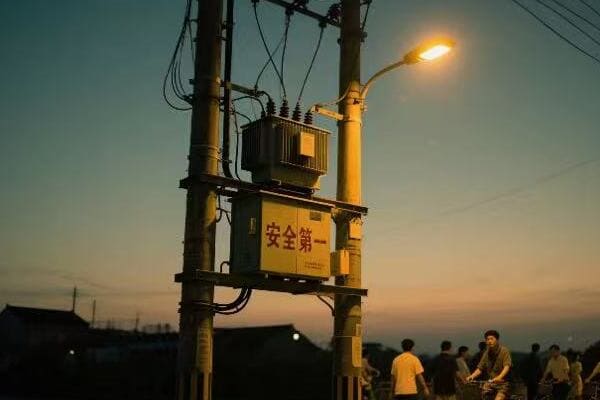
Adapting Transformers for Urban Use
Let’s explore how pole-mounted transformers are modified to suit urban environments:
Compact Design
Urban transformers often need to be smaller due to space constraints. This requires:
- More efficient cooling systems
- Use of advanced materials for better performance in smaller sizes
- Innovative designs to maximize power capacity in limited space
I once worked on a project in a densely populated urban area where space was at a premium. We had to design custom transformers that could fit in narrow alleyways while still meeting the high power demands of the neighborhood.
Enhanced Cooling Systems
Urban transformers often operate at higher loads, requiring better cooling:
- Use of more efficient cooling oils
- Addition of external cooling fins
- In some cases, forced-air cooling systems
Smart Monitoring and Control
Urban transformers increasingly incorporate smart technology:
- Real-time load monitoring
- Remote control capabilities
- Integration with smart grid systems for better load management
In a recent project, we installed smart transformers in a busy downtown area. These units could communicate with the utility’s control center, allowing for real-time load balancing and quick response to potential issues.
Vandalism Protection
Urban transformers are more exposed to potential vandalism:
- Reinforced enclosures
- Tamper-proof designs
- Installation at greater heights on poles
Integration with Underground Systems
Many urban areas use a combination of overhead and underground distribution:
- Transformers designed to connect easily to underground cables
- Pad-mounted designs for areas with fully underground distribution
Here’s a comparison of urban transformer features with standard rural designs:
| Feature | Urban Transformer | Standard Rural Transformer |
|---|---|---|
| Size | Compact | Larger |
| Cooling System | Enhanced | Basic |
| Smart Capabilities | Advanced | Limited or None |
| Vandalism Protection | High | Basic |
| Load Capacity | Higher | Lower |
| Underground Compatibility | Often Required | Rarely Needed |
The adaptation of pole-mounted transformers for urban use is a fascinating area of electrical engineering. In my experience, every urban project brings unique challenges. For instance, in one historic district, we had to design transformers that not only met the technical requirements but also blended with the architectural aesthetics of the area.
Another interesting aspect of urban transformer adaptation is noise reduction. In densely populated areas, the hum of transformers can be a nuisance. We’ve developed special vibration dampening systems and low-noise designs to address this issue.
The increasing adoption of electric vehicles in cities presents new challenges for urban transformers. In a recent project, we had to upgrade several transformers to handle the increased load from EV charging stations. This required not just higher capacity units, but also smarter load management systems to handle the variable demand.
Urban transformers also play a crucial role in power quality management. With the high concentration of sensitive electronic equipment in cities, maintaining stable voltage and minimizing harmonics is crucial. We’ve incorporated advanced voltage regulation and harmonic filtering capabilities into urban transformer designs to address these needs.
As cities continue to grow and evolve, so too will the design of urban pole-mounted transformers. The trend towards smart cities and renewable energy integration will likely drive further innovations in transformer technology. It’s an exciting field that continues to challenge and inspire electrical engineers like myself.
Unique Challenges of Power Pole Transformers in Remote Rural Areas?
Have you ever wondered why power outages seem more frequent or last longer in rural areas? The challenges faced by power pole transformers in remote locations are quite different from those in urban settings. These unique obstacles can significantly impact the reliability and efficiency of rural power distribution.
Power pole transformers in remote rural areas face challenges like longer distances, harsh weather exposure, wildlife interference, and limited access for maintenance. They must be designed for higher voltage drops, better surge protection, and increased durability. Rural transformers often serve smaller loads but cover larger areas.
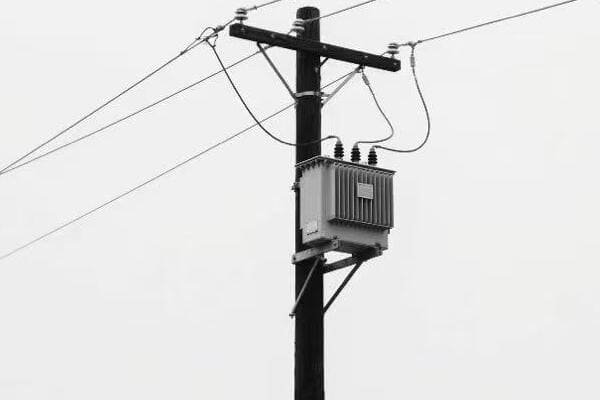
Exploring Rural Transformer Challenges
Let’s dive into the specific challenges faced by power pole transformers in remote rural areas:
Long Distance Power Transmission
Rural transformers often need to handle electricity that has traveled long distances:
- Higher voltage drop along lines
- Need for voltage regulation equipment
- Increased susceptibility to power quality issues
I once worked on a project to power a small village 50 miles from the nearest substation. We had to carefully design a system of transformers and voltage regulators to maintain stable power quality over such a long distance.
Weather Exposure
Rural transformers are more exposed to harsh weather conditions:
- Greater risk of lightning strikes
- Exposure to extreme temperatures
- Vulnerability to high winds and storms
Wildlife Interference
Animals can cause significant problems for rural transformers:
- Birds and squirrels causing short circuits
- Larger animals damaging equipment
- Nests interfering with cooling systems
In one memorable case, we had to redesign transformer enclosures in an area where bears were causing frequent damage to equipment.
Limited Access for Maintenance
Remote locations make regular maintenance challenging:
- Longer response times for repairs
- Difficulty in transporting heavy equipment
- Higher costs for routine inspections
Lower Load Density
Rural transformers often serve smaller, more spread-out loads:
- Need for transformers to operate efficiently at lower capacities
- Challenges in load forecasting and system planning
- Higher per-customer cost for power distribution
Here’s a comparison table of challenges faced by rural transformers versus urban ones:
| Challenge | Rural Transformers | Urban Transformers |
|---|---|---|
| Distance from Substation | Long | Short |
| Weather Exposure | High | Moderate |
| Wildlife Interference | Significant | Minimal |
| Maintenance Access | Limited | Easy |
| Load Density | Low | High |
| Voltage Regulation | More Challenging | Less Challenging |
Addressing these challenges requires innovative solutions. In my experience, one of the most effective approaches has been the use of smart grid technologies. In a recent project, we installed remote monitoring systems on rural transformers. This allowed the utility company to detect and respond to issues much faster, significantly reducing outage times.
Another interesting solution we’ve implemented is the use of solar-powered voltage regulators. In areas where installing traditional voltage regulation equipment was impractical due to distance or terrain, these solar-powered units provided a cost-effective solution to maintain power quality.
The choice of insulating materials is also crucial for rural transformers. We’ve been experimenting with advanced polymer insulators that are more resistant to pollution build-up and wildlife interference. These materials have shown promising results in reducing maintenance needs and improving reliability in remote areas.
Energy storage is becoming an increasingly important part of rural power systems. In some projects, we’ve integrated battery storage systems with transformers to help manage load fluctuations and improve reliability. This approach has been particularly effective in areas with significant renewable energy generation.
As we look to the future, the challenges faced by rural transformers are likely to evolve. The increasing adoption of distributed energy resources, such as small-scale wind and solar, will require more flexible and intelligent transformer systems. Additionally, the potential growth of rural electric vehicle usage will present new load management challenges.
Despite these challenges, ensuring reliable power supply to rural areas remains a crucial goal. It’s not just about convenience; it’s about providing equal opportunities for development and quality of life. As engineers, we continue to innovate and find new ways to overcome these unique rural power distribution challenges.
Summary: Which Environment Puts More Stress on Transformers?
After exploring how power pole transformers function in both rural and urban settings, you might be wondering which environment is actually tougher on these crucial devices. The answer isn’t as straightforward as you might think, as each setting presents its own unique set of challenges.
Both rural and urban environments stress transformers, but in different ways. Urban transformers face higher load demands and space constraints, while rural transformers deal with longer distances, harsher weather, and wildlife interference. The stress type differs, making direct comparison challenging.
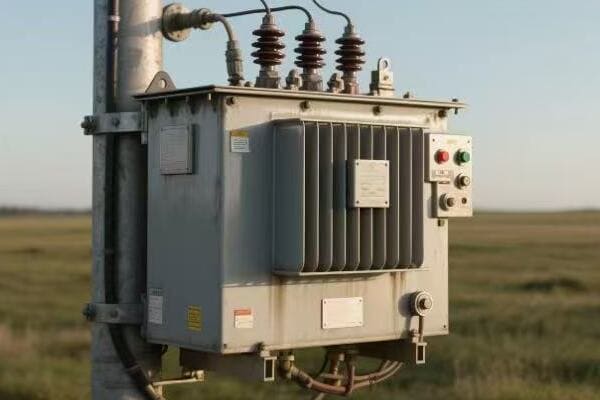
Comparing Stresses on Rural and Urban Transformers
Let’s break down the key stress factors for transformers in each environment:
Urban Transformer Stresses
-
High Load Density:
- Constant high demand
- Risk of overloading
- Heat management challenges
-
Space Constraints:
- Limited cooling options
- Difficulty in accessing for maintenance
-
Power Quality Issues:
- Harmonics from electronic loads
- Voltage fluctuations due to varying demand
-
Physical Security:
- Risk of vandalism
- Accidental damage from vehicles
Rural Transformer Stresses
-
Long Distance Transmission:
- Voltage regulation challenges
- Higher exposure to surges and lightning
-
Environmental Factors: – Extreme weather conditions
- Wildlife interference
- Exposure to pollution and corrosive elements
-
Maintenance Challenges:
- Limited access for repairs
- Longer outage times during failures
-
Variable Load Profiles:
- Seasonal changes in demand
- Difficulty in load forecasting
To better understand the comparison, let’s look at a stress factor table:
| Stress Factor | Urban Transformers | Rural Transformers |
|---|---|---|
| Load Stress | High | Low to Moderate |
| Environmental Stress | Moderate | High |
| Maintenance Stress | Moderate | High |
| Electrical Stress | High | Moderate |
| Physical Security Risk | High | Low |
In my years of experience working with both urban and rural power systems, I’ve seen how each environment presents unique challenges. I remember a project in a dense urban area where we had to replace a transformer that had failed due to consistent overloading. The challenge wasn’t just in installing a higher capacity unit, but also in finding space for a larger transformer and improving cooling in the confined urban setting.
Conversely, I worked on a rural project where a transformer had been damaged by lightning. The remote location meant it took days to get the replacement parts and personnel on site. This extended outage highlighted how the main stress in rural areas often comes from environmental factors and accessibility issues.
Factors Influencing Stress Levels
-
Load Patterns:
Urban transformers generally face more consistent high loads, while rural transformers deal with more variable and often lower loads. However, the steady high load in urban areas can lead to faster degradation of insulation and other components. -
Environmental Exposure:
Rural transformers are typically more exposed to the elements. They face a higher risk of damage from storms, lightning, and wildlife. Urban transformers, while somewhat protected from these factors, face issues like heat island effects and pollution. -
Maintenance and Monitoring:
Urban transformers benefit from easier access for maintenance and often have more advanced monitoring systems. Rural transformers, while facing less frequent issues, can suffer from longer downtimes when problems do occur due to their remote locations. -
Power Quality:
Urban areas often have more issues with power quality due to the high concentration of non-linear loads (like computers and LED lighting). Rural areas may face voltage regulation issues due to long transmission distances. -
Physical Security:
Urban transformers are at higher risk of vandalism or accidental damage, while rural transformers rarely face these issues.
Innovative Solutions
To address these varied stresses, we’ve been implementing some innovative solutions:
-
Smart Transformers:
In both urban and rural settings, we’re increasingly using transformers with built-in monitoring and communication capabilities. These allow for real-time load management and early detection of potential issues. -
Advanced Materials:
New insulating materials and cooling fluids are being developed that can better withstand the stresses in both environments. For example, we’ve used biodegradable transformer oils in environmentally sensitive rural areas. -
Modular Designs:
In urban areas, we’ve started using modular transformer designs that can be more easily installed and replaced in tight spaces. -
Renewable Integration:
In rural areas, we’re exploring ways to integrate small-scale renewable energy sources with transformers to reduce stress on long-distance transmission lines.
In conclusion, it’s challenging to say definitively which environment puts more stress on transformers. Urban environments stress transformers through high, consistent loads and space constraints, while rural environments stress them through environmental factors and maintenance challenges.
The key takeaway is that transformer design and maintenance strategies need to be tailored to their specific operating environment. As we continue to innovate in power distribution, we’re finding ways to make transformers more resilient in both settings. This adaptability is crucial as we work towards more reliable and efficient power grids in all areas, urban and rural alike.
Conclusion
Power pole transformers face unique challenges in both rural and urban environments. Urban settings stress transformers with high loads and space constraints, while rural areas present environmental and maintenance challenges. Effective power distribution requires tailored solutions for each setting, emphasizing the importance of context-specific transformer design and management.
Free CHBEB Transformer Catalog Download
Get the full range of CHBEB transformers in one catalog.
Includes oil-immersed, dry-type, pad-mounted, and custom solutions.
Quick Message
Request A free quote
We'd like to work with you
- +86 15558785111
- [email protected]
- +86 15558785111
What We Do
CHINA BEI ER BIAN (CHBEB) GROUP, with 218 million in registered capital, originated from Beijing Beierbian Transformer Group. Headquartered in Beijing for R&D, it operates major production bases in Nanjing and Yueqing, producing high-quality products.
Latest Product
address
BeiJing
No 3,RongJing East Road,BeiJing Economic Technological Development Area,BeiJing,China
JiangSu
No 7️Xiangfeng Road,Jiangning,NanJing,JiangSu,China
WenZhou
No.211, Wei 16 Road, Industrial Zone, Yueqing, Wenzhou, Zhejiang, China.
XiangYang Industrial Zone ,YueQing,WenZhou,ZheJiang,China
contact us
- [email protected]
- +86 13057780111
- +86 13057780111
- +86 15558785111
Copyright © Bei Er Bian Group


